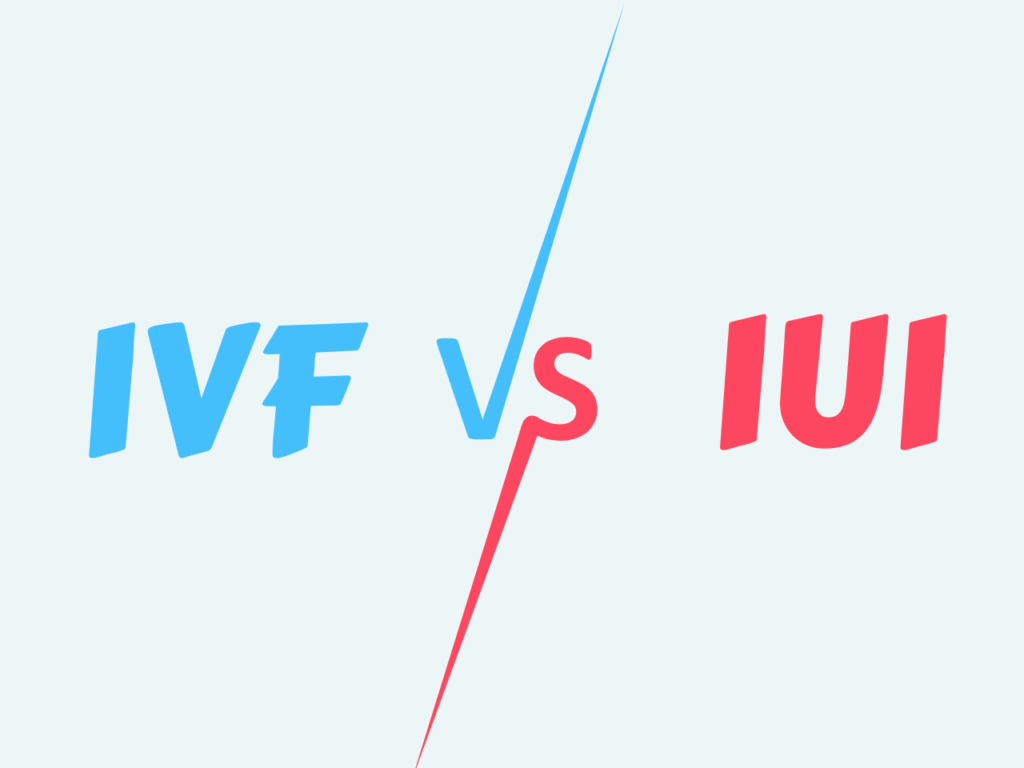Choosing the right fertility treatment is a pivotal decision for couples facing challenges in conceiving. Two of the most common assisted reproductive technologies are Intrauterine Insemination (IUI) and In Vitro Fertilization (IVF). Understanding their differences can help you make an informed choice tailored to your specific needs.
Understanding IUI and IVF
What is IUI?
Intrauterine Insemination (IUI) involves placing washed and concentrated sperm directly into the uterus around the time of ovulation. This procedure aims to increase the number of sperm reaching the fallopian tubes, thereby enhancing the chances of fertilization.
What is IVF?
In Vitro Fertilization (IVF) is a more complex process where eggs are retrieved from the ovaries and fertilized with sperm in a laboratory. The resulting embryos are then transferred to the uterus, with the hope of implantation and pregnancy.
Key Differences Between IUI and IVF
Aspect | IUI | IVF |
Procedure Complexity | Less invasive; involves sperm insertion | More invasive; involves egg retrieval and embryo transfer |
Success Rates | Approximately 10–20% per cycle | Approximately 40–60% per cycle for women under 35 |
Cost (India) | ₹10,000–₹20,000 per cycle | ₹1,35,000–₹1,50,000 per cycle |
Suitable For | Unexplained infertility, mild male infertility | Blocked fallopian tubes, severe male infertility, failed IUI attempts |
Treatment Duration | 2–3 weeks per cycle | 4–6 weeks per cycle |
Genetic Testing | Not applicable | Possible through Preimplantation Genetic Testing (PGT) |
Factors to Consider When Choosing Between IUI and IVF
Age
- Under 35: IUI may be considered initially due to its less invasive nature and lower cost.
- Over 35: IVF is often recommended as fertility declines with age, and IVF offers higher success rates.
Cause of Infertility
- Mild Issues: IUI is suitable for cases like mild male infertility or unexplained infertility.
- Severe Issues: IVF is preferred for conditions such as blocked fallopian tubes, severe male infertility, or endometriosis.
Financial Considerations
While IUI is more affordable per cycle, multiple unsuccessful attempts can accumulate costs. IVF, though more expensive upfront, may offer higher success rates, potentially reducing the number of cycles needed.
Time Constraints
If time is a critical factor, IVF’s higher success rates per cycle may make it the more efficient option.

Success Rates: A Closer Look
IUI: Success rates range from 10–20% per cycle, depending on factors like age and underlying fertility issues.
IVF: Success rates are higher, approximately 40–60% per cycle for women under 35, but decrease with age.
FAQs
IVF (In Vitro Fertilization) involves fertilizing the egg and sperm outside the body in a lab, then placing the embryo into the uterus. IUI (Intrauterine Insemination) is simpler — sperm is directly inserted into the uterus around ovulation to increase the chance of fertilization.
IVF generally has higher success rates, especially for women over 35 or those with complex fertility issues. IUI is often the first-line treatment for younger women with no major infertility problems. Your success rate depends on age, fertility diagnosis, and medical history.
This depends on your age, cause of infertility, duration of trying, and financial considerations. IUI may be recommended first if you have unexplained infertility or mild male factor issues. IVF may be better if you have blocked tubes, severe male factor infertility, or have tried IUI without success.
Yes, IVF is significantly more expensive than IUI due to the advanced lab procedures, medications, and embryo transfer. However, it may be more cost-effective in the long run if IUI fails after multiple cycles.
Most fertility specialists recommend trying 3–6 cycles of IUI. If you do not conceive during this time, IVF may be the next step — especially if you are over 35 or have other fertility complications.
Conclusion
Both IUI and IVF have their merits and are suitable for different situations. Consulting with a fertility specialist is crucial to evaluate your specific circumstances and determine the most appropriate treatment plan.



